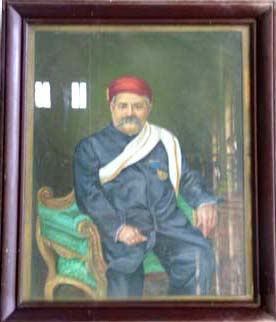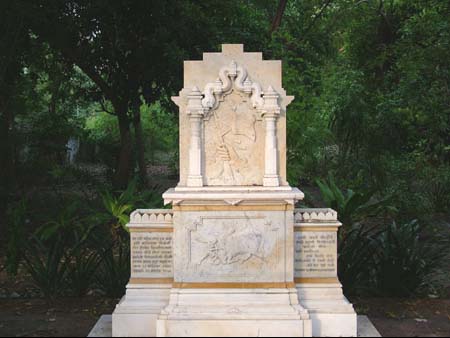The College

Our brief history
Those were the words with which the then Educational Inspector for the Northern Division, Mr.T.C.Hope (later Sir Theodore C. Hope) successfully persuaded a group of leading citizens of Ahmedabad, in 1856, to come forward with contributions for setting up a college in the city. In response to his call, a sum of Rs. 42,600 was raised which formed the nucleus of the funds to finance the first institution of higher learning in Ahmedabad- and in Gujarat.
The College had its share of teething troubles and the going was not smooth in the years of its infancy. In fact, as Prof. F.C.Davar, one of the leading educationist of the college, has remarked: “Our college, like a kingdom, has experienced the usual initial difficulties when it was founded, and it has had throughout, a remarkably chequered career.”
In the beginning, the college was faced with a severe shortage of students, mainly because they had no facilities to complete their courses in Ahmedabad-they had to go to Bombay to appear for the examinations. The paucity of numbers became so acute that the college had to close down in 1872.
Six years later, When Sir Richard Temple was the Governor, the Government agreed to restart the college provided half the annual expenditure of Rs.16,000 was met from contributions by the citizens of Ahmedabad. The Municipality of Ahmedabad readily agreed to contribute Rs.3,000 annually to make up the deficiency until the endowment Fund could be raised to Rs. 2 lakh. Accordingly, the college resumed functioning under Government control in 1884. The same year the University of Bombay recognised the college as a center for the B.A. degree examination. This gave a further impetus to the development of the college which soon found that its Mirzapur road building, into which it had moved from the High School classroom, was too small to house its growing activities. In 1897, the college shifted to its present magnificent main building in sylvan surroundings on a 30-acre campus.
Gujarat College was under government control from 1884 to 1887 when it was handed over to the Society for the Promotion of Higher Education in Gujarat, governed by a board comprising representatives of the Society and nominees of the government and municipality. The Society, however, dissolved itself in 1912 and handed back management of college to the Government which has continued to run it since then.
The college has had a succession of illustrious Principals who fostered it with loving care and great devotion. The longest tenure was that of the Rev. W.G.Robertson who was Principal from 1909 to 1924,- fifteen eventful, unforgettable years. It was during this principalship that the college became the recipient of munificent donations from Sir Chinubhai Madhavlal Ranchhodlal, Baronet, the eminent philanthropist and industrialist.
Sir Chinubhai donated Rs. 6 lakh towards the formation of M.R. Science Institute which offered courses leading to the B.Sc. degree examination of Bombay University. The institute was declared open by Sir George Sydenham Clarke (later Lord Sydenham). Further bestowments from Sir Chinubhai financed the construction of a library building named after Lord Sydenham, and a college hall named the King Emperor George V Hall.
Thanks to the patronage of Sir Chinubhai and the unceasing efforts and dedication of those at the helm of its affairs, the college has steadily grown since then, developing on all fronts. In 1927, When Mr. Findlay Shirras was Principal, a full grade Law College, named after Justice Sir Lallubhai A. Shah, was started. The development of the college kept pace with the needs of the time, and hostels and new departments were continually being added. It was during the principalship of Mr. Shirras that the strike of 1929 took place in the college when the students joined the National Movement bycotting the Simon Commission. Though more than a month was lost by the students, it is worth noting that they sought no exemption from the examinations.

The political situation in the country had its continuous effects on the students of the college who mirrored the feelings of the rest of the nation. The 1929 strike, which had the support of national leaders like Sardar Patel and Acharya Kriplani, was hailed by Gandhiji as “inaugurating a new era”. The greatest event was undoubtedly on August 10, 1942, two days after the “Quit India” movement was launched, when one of its students, VinodKinariwala, was martyred on the college grounds. Vinod was shot at point blank range, while he was leading a band of students, holding the national flag aloft. His martyrdom reinforced the spirit of resistance and sacrifice in the student communnity throughout the country. Today, an inspiring monument stands at the place where Shahid Veer VinodKinariwala made the supreme sacrifice for national freedom.
On the night of August 8, 1942, RavisankarMaharaj spoke to the students on their duty in the prevailing situation (when all the national leaders had been arrested). Following this, the secretaries of the National Student Union, Trivedi and Bhupendra Patel, convened a meeting of students at the residence of Bhalmalji on August 9. At the meeting, it was decided to take out a procession of students from the Law College ground the following day. News of the decision spread throughout the town. A large number of students gathered in the ground opposite Law College on Monday, August 10, morning. And at half past ten, the procession started. It was a 2,000-strong procession, girls forming the vanguard.
As the processionists neared Gujarat College, the police stopped them and caned even the girl students. Meanwhile, some students entered the college compound. VinodKinariwala was one of them. Heading a group of students and holding the national flag in his hand, Vinod had taken a vow that he would never let the flag be dishonoured.
Principal Patwardhan, Prof. Dhirubhai Thakkar and Prof. F.C.Davar came running to pacify the agitated students. Dhirubhai Thakkar received severe blows when he approached a police officer who was about to open fire. Vinod challenged the policemen the who were caning the girls. Soon Vinod was ordered to surrender the flag he was carrying. He refused.
As tension mounted, a police officer fired in the air as a warning. A second shot was fired, and Vinodkinariwala fell to the ground with the flag in his hand. He died on the spot. August 10,1947. More than ten thousand people assembled at the Gujarat College ground. It was a very special function, a solemn occasion. Mr.Jayaprakash Narayan unveiled a memorial to Vinodkinariwala built at the very spot where he was martyred.
Speaking on the occasion, Mr.Jayaprakash Narayan observed: “In war, people die of bullet injuries. But Vinod did not die the death of an ordinary soldier. He died standing by the national flag, his principles and his duties. There is a greatness in his sacrifice before which we should all bow down.”
The college has had other students who had distinguished themselves in different walks of life. It has turned out eminent men like AnandshakarDhruva, Firoze C. Davar, Bhulabhai Desai, KeshavlalDhruva, KashinathAbhyankar, KasturbhaiLalbhai, Ambalal Sarabhai, Dr. Vikram Sarabhai, G.V.Mavlankar, KAviNanalal and Dr. Umashankar Joshi- to name a few. The first two women graduates of Gujarat- Mrs. Shardaben S. Mehta and Lady VidyagauriNeelkanth- were also from this college. The college has been fortunate in having the services of a long line of erudite and dedicated teachers who have moulded the character and influenced the careers of generations of young men and women.

Gujarat College has indeed travelled far from its modest beginnings in a classroom of a High School. Today, a number of buildings in its sprawling, tree-lined campus, house a variety of departments offering degree courses in Arts, Science and Commerce and a diploma course in dramatics. The college has a teaching staff of 103 to take care of the 1139 students now on its rolls. And in contrast to the Rs.42,600 that was initially raised to set up the institution.



